M11 Business Link
Stansted
Essex, CM24 8GF
United Kingdom
Battery Safety Guidelines
CAUTION: Battery Electrolyte contains sulphuric acid, which cause burns to skin and eyes. We suggest you wear suitable eye protection and gloves when unpacking and handling batteries.
Material Safety Data Sheets
MSDS: Dry Charged Batteries
MSDS: Wet Batteries
MSDS: Value Regulated Lead Acid (VRLA) Batteries
How do I unpack my battery?
Please ensure that you open the packaging on a flat surface and in a well ventilated area.
Open the cardboard box, and remove the filling. Your battery will be encased in polyethylene within the box and there will be instructions for you in the box. Be very aware of any liquid in the polyethylene wrapping. If you suspect a spillage - please refer to the instructions immediately below.
Take the wrapped battery out of the box and place on a flat surface. Carefully cut the top of the wrapping open and lift the battery clear.
Remove the breather hole plugs. These are small red or black plugs at the top of the battery that block the breather holes. You MUST remove these as failure so to do could result in the battery exploding in service.
You will need to keep the packaging in the event you need to return the battery to us. We have developed the packaging in conjunction with our logistics partners and it is designed to minimise our impact on the environment while the battery is in transit. Keep the vent plugs and the polyethylene bag as the battery will have to be plugged and encased in polyethylene for transportation.
I have accepted delivery and there is fluid in the packing, what do I do?
This is probably a small amount of battery acid - DO NOT PLACE ON ANY SURFACES SUCH AS CARPETS, WOODEN FLOORS or SINKS, AVOID CONTACT WITH CLOTHES AND SKIN.
Do NOT unpack the battery and continue to avoid contact with skin, clothes, carpets, floors etc
If you have the fluid on your skin, you MUST rinse the affected area thoroughly.
As far as you are able, please check the battery for signs of any physical damage. If the battery has leaked, there will almost certainly damage to the battery box. If the breather plugs are missing, the electrolyte might have escaped from there.
If there is damage please contact us immediately and we will determine the best course of action going forward with regard to return and replacement of the battery.

Take note of the information on the battery, the instructions for use and the operating instructions of the vehicle.

Wear eye protection.
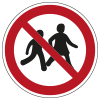
Keep children away from acid and batteries.
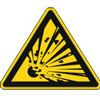
Explosion danger:
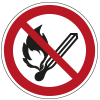
No naked flames, sparks, naked lights or smoking:
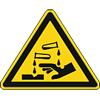
Chemical burns danger:
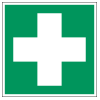
First Aid:

Warning:

Disposal: